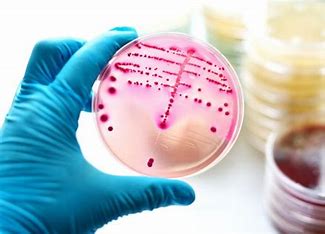
Introduction:
The food industry is a complex ecosystem where ensuring hygiene and sanitation is paramount to public health. Microorganisms, both beneficial and potentially harmful, play a pivotal role in shaping the safety of our food supply. In this case study, we explore the crucial role of food microbiology in ensuring hygiene and sanitation, drawing insights from real-world examples and experiences within the industry.
I. Identification of Pathogens:
A.Case Study: Outbreak Prevention in a Poultry Processing Plant
A poultry processing plant faced a series of foodborne illness outbreaks linked to the consumption of contaminated chicken products. The plant management sought to identify and mitigate the presence of pathogens, particularly Salmonella and Campylobacter, in their processing environment.
Food Microbiology Intervention: Microbiologists conducted a thorough assessment of the processing line, from slaughter to packaging, using advanced microbial testing techniques. Identification of specific pathogenic strains allowed for targeted interventions to eliminate contamination sources.
Role of Food Standards:Adherence to food safety standards, such as the Hazard Analysis Critical Control Point (HACCP) system, guided the implementation of preventive measures. Standards provided a framework for identifying critical control points and setting microbiological criteria. The integration of standards ensured that the interventions were not only effective but also compliant with industry benchmarks.
Outcome:Implementing stringent hygiene practices and targeted sanitation measures significantly reduced the prevalence of pathogens.The plant experienced a notable decrease in foodborne illness cases linked to their products, highlighting the crucial role of food microbiology in outbreak prevention.
- Microbial Spoilage Detection:
B.Case Study: Quality Assurance in a Dairy Processing Facility
A dairy processing facility faced challenges with microbial spoilage affecting the shelf life and quality of their dairy products.Consumer complaints and quality control issues prompted the need for a comprehensive approach to detect and mitigate spoilage microorganisms.
Food Microbiology Intervention:Microbiologists employed advanced spoilage detection techniques, including microbial profiling and sensory analysis, to identify the specific microorganisms responsible for product degradation.Environmental monitoring was implemented to track potential contamination sources within the facility.
Role of Food Standards:Food standards, particularly those related to microbial quality and safety, provided a benchmark for the acceptable limits of spoilage microorganisms. The facility aligned its spoilage detection program with these standards, ensuring that the interventions were not only effective but also compliant.
Outcome:By pinpointing the specific spoilage microorganisms, the facility implemented targeted changes in processing and storage conditions.The intervention resulted in an improved product shelf life and a reduction in consumer complaints, showcasing the critical role of food microbiology in maintaining product quality.
III. Quality Assurance:
C.Case Study: Microbial Quality Monitoring in a Ready-to-Eat Food Manufacturer
A ready-to-eat food manufacturer faced challenges in maintaining consistent microbial quality across their product line.Fluctuations in quality led to concerns about regulatory compliance and consumer safety.
Food Microbiology Intervention:Microbiologists implemented a comprehensive microbial quality monitoring program, regularly testing samples from different production batches.The data collected allowed for the identification of specific areas in the production process contributing to microbial variations.
Role of Food Standards:Adherence to food safety standards, such as the Hazard Analysis Critical Control Point (HACCP) system, guided the implementation of preventive measures. Standards provided a framework for identifying critical control points and setting microbiological criteria. The integration of standards ensured that the interventions were not only effective but also compliant with industry benchmarks.
Outcome:The continuous monitoring and analysis of microbial quality data enabled the manufacturer to implement targeted improvements in their production processes.Consistent adherence to microbial quality standards resulted in enhanced product safety and regulatory compliance.
- Preservation Techniques:
D.Case Study: Extending Shelf Life through Microbial Understanding in a Bakery
A bakery faced challenges in extending the shelf life of their products without resorting to excessive preservatives.The management sought a microbial understanding to develop effective preservation techniques while maintaining product quality.
Food Microbiology Intervention:Microbiologists conducted research on the specific spoilage microorganisms affecting bakery products and identified natural antimicrobial agents.The findings were used to develop a preservation strategy that inhibited spoilage without compromising the sensory attributes of the products.
Role of Food Standards: Food standards related to preservatives and shelf life provided a framework for setting acceptable limits. The bakery ensured that its innovative preservation techniques were compliant with these standards, meeting the dual objectives of extended shelf life and consumer safety.
Outcome:The implementation of the new preservation techniques resulted in a notable extension of product shelf life.Consumer satisfaction increased, and the bakery achieved a competitive edge by delivering products with reduced preservatives and enhanced freshness.
- HACCP Systems:
E. Case Study: Strengthening HACCP Implementation in a Seafood Processing Facility
A seafood processing facility faced challenges in maintaining consistency in HACCP (Hazard Analysis Critical Control Point) implementation.Occasional lapses in control measures led to concerns about potential hazards in the processing line.
Food Microbiology Intervention:Microbiologists conducted a comprehensive audit of the HACCP system, focusing on critical control points identified for microbial hazards.Microbial testing was integrated into the routine monitoring of these control points to ensure real-time identification of potential risks.
Role of Food Standards: HACCP is a globally recognized food safety system, and adherence to its principles is often mandated by food safety standards and regulations. The facility aligned its HACCP implementation with industry standards, ensuring that the system met the criteria outlined in regulatory frameworks.
Outcome:The integration of food microbiology into the HACCP system allowed for a proactive approach to hazard prevention.The facility achieved enhanced compliance with regulatory requirements, reduced the risk of microbial contamination, and strengthened overall food safety practices.
- Regulatory Compliance:
F.Case Study: Microbial Compliance in a Beverage Production Plant
A beverage production plant faced challenges in meeting stringent microbial standards set by regulatory authorities.Regulatory inspections highlighted areas of concern, prompting the need for a robust compliance strategy.
Food Microbiology Intervention:Microbiologists collaborated with regulatory compliance teams to conduct a comprehensive assessment of the facility’s microbial control measures.Microbial testing protocols were optimized to align with regulatory requirements, ensuring accurate and consistent results.
Role of Food Standards: Regulatory standards, including those set by health authorities and food safety agencies, provided a framework for acceptable limits of microbial contaminants. The plant aligned its microbial control measures with these standards, ensuring compliance and addressing areas of concern identified during regulatory inspections.
Outcome:The facility successfully addressed the identified microbial control gaps, resulting in improved compliance with regulatory standards.Regulatory inspections yielded positive outcomes, and the plant became a benchmark for microbial compliance within the industry.
VII. Risk Assessment:
G. Case Study: Mitigating Microbial Risks in a Fresh Produce Supply Chain
A fresh produce supply chain faced challenges related to sporadic outbreaks of foodborne illnesses linked to microbial contamination.The supply chain stakeholders recognized the need for a comprehensive risk assessment to identify and mitigate potential hazards.
Food Microbiology Intervention:Microbiologists collaborated with stakeholders to conduct a thorough risk assessment of the entire supply chain, from farm to table.Hazard identification, microbial testing, and traceability measures were implemented to pinpoint potential contamination sources.
Role of Food Standards: Risk assessment is often an integral part of food safety standards, providing guidelines for identifying and mitigating potential hazards. The supply chain aligned its risk assessment measures with established food standards, ensuring that interventions were in accordance with industry benchmarks.
Outcome:The risk assessment process allowed for the implementation of targeted interventions at critical points in the supply chain.Collaborative efforts led to a significant reduction in foodborne illness outbreaks, highlighting the effectiveness of a holistic food microbiology-based risk assessment approach.
Case Study: Pathogen Control in a Poultry Processing Plant
A large-scale poultry processing plant faced recurrent challenges with pathogenic contamination, leading to foodborne illness outbreaks. The management recognized the need for a comprehensive approach to identify and control pathogens, particularly Salmonella and Campylobacter, throughout the processing chain.
Food Microbiology Intervention: Microbiologists conducted an in-depth analysis using advanced microbial testing techniques, including PCR and genomic sequencing. The aim was to identify specific strains of pathogens and understand their prevalence within the processing environment. This information guided the implementation of targeted interventions, such as reevaluating processing steps, implementing strict hygiene protocols, and introducing antimicrobial washes.
Role of Food Standards: Adherence to food safety standards, especially the Hazard Analysis Critical Control Point (HACCP) system, played a crucial role in shaping the interventions. Standards provided a framework for identifying critical control points, setting microbiological criteria, and ensuring that the interventions met industry benchmarks. The integration of food standards ensured a systematic and comprehensive approach to pathogen control.
Outcome: The combination of advanced microbial analysis and adherence to food standards resulted in a significant reduction in pathogenic contamination. The plant’s commitment to stringent microbiological criteria established through food standards led to enhanced food safety, minimizing the risk of foodborne illnesses.
- Emerging Trends: Technology-Driven Hygiene and Sanitation
- Blockchain for Traceability:Blockchain technology is revolutionizing traceability in the food supply chain. By leveraging a decentralized and transparent ledger, it allows for real-time tracking of food products from farm to fork. In terms of hygiene and sanitation, this technology ensures accountability at every stage, enabling swift identification and removal of contaminated products.
- Rapid Pathogen Detection Techniques:The advent of rapid pathogen detection techniques, such as biosensors and molecular diagnostic tools, is transforming how the food industry approaches microbiological safety. These technologies provide quicker and more accurate results, allowing for immediate corrective actions and reducing the time between detection and response.
- Artificial Intelligence (AI) in Microbial Risk Assessment:AI applications are being employed in microbial risk assessment, enhancing the predictive capabilities of potential hazards. Machine learning algorithms analyze vast datasets, identify patterns, and predict potential risks, enabling proactive interventions to mitigate microbial threats before they escalate.
- Robotic and Automation Solutions:Robotic and automation solutions are increasingly being integrated into food processing facilities for tasks that involve hygiene and sanitation. From automated cleaning systems to robotic pathogen detection, these technologies enhance efficiency while minimizing human contact, reducing the risk of microbial contamination.
- Data Analytics for Continuous Monitoring:Data analytics platforms are being used for continuous monitoring of microbial data in real-time. This trend allows food manufacturers to analyze trends, identify potential risks, and implement preventive measures promptly. It facilitates a proactive approach to hygiene and sanitation, aligning with the industry’s shift towards predictive rather than reactive measures.
Conclusion:
In this case study, the integration of food microbiology in various facets of the food production process showcased its crucial role in ensuring hygiene and sanitation. Microbial safeguards, ranging from pathogen identification to spoilage detection, preservation techniques, HACCP implementation, regulatory compliance, and risk assessment, illustrated the multifaceted impact of microbiological interventions.The case study of the poultry processing plant stands as a testament to the crucial role played by food microbiology in safeguarding the integrity of our food supply. As we savor the end products of this intricate process, it is imperative to acknowledge the silent guardians – the microbial entities shaping the narrative of hygiene and sanitation in the food industry.
In the grand symphony of food production, the harmony between food microbiology and standards creates an orchestrated ballet, ensuring that each meal reaching our tables is not just a culinary delight but a testament to the meticulous care taken to guarantee its safety. The microbial guardians continue their watchful presence, an integral part of the intricate dance that sustains the delicate balance between flavour and safety in our food supply chain.
Furthermore, the influence of food standards acted as a guiding framework, providing benchmarks and criteria to ensure that microbiological interventions were not only effective but also aligned with industry regulations. Adherence to food standards played a pivotal role in enhancing food safety, maintaining product quality, and meeting regulatory requirements. Furthermore, exploring emerging trends showcased the dynamic nature of the food industry’s response to hygiene and sanitation challenges. From technology-driven traceability to rapid pathogen detection techniques and the incorporation of AI and automation, these trends are not only enhancing food safety but also reshaping the industry’s approach to microbial risk management.As we navigate the complexities of the food industry, the symbiotic relationship between food microbiology, regulatory frameworks, and adherence to food standards remains paramount. This holistic approach is essential for safeguarding public health, building consumer trust, and establishing a foundation for the continuous improvement of food safety practices within the industry.

Radhika Singh
Assistant Professor, School of Hospitality & Hotel Management,
Geeta University
Related Posts

Career Opportunities Pharmacy Degree – Geeta University
The term “Pharmacy” has been derived from the Greek word “Pharmakeia” which stands for drug and/or medicine. Pharmacy is the health profession that bridges the

Best Courses After 12th Arts, Future, Scope and Career Prospects – Geeta University
It is important to choose the right subject for your graduation because it is probably the most important time for your study. Making the right

Dining Etiquette and Its Importance
Dining Etiquette and Its Importance: Dining etiquette, often overlooked in our fast-paced and modern world, plays a crucial role in our social interactions, personal relationships,


